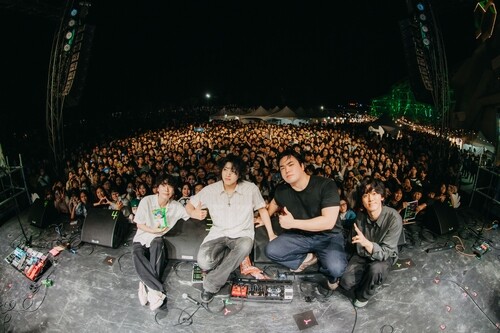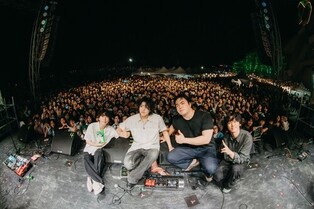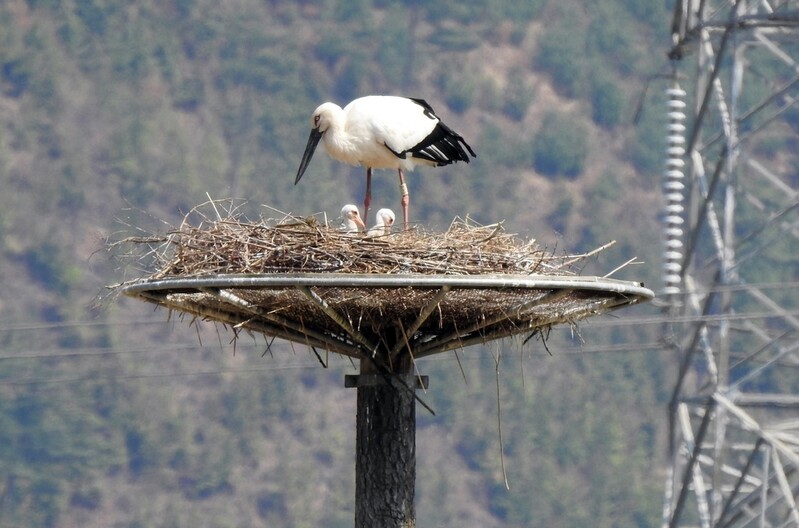 |
| ▲ This photo, provided by the Yesan Oriental Stork Park, shows the newly hatched storks in the artificial nest tower. (PHOTO NOT FOR SALE) (Yonhap) |
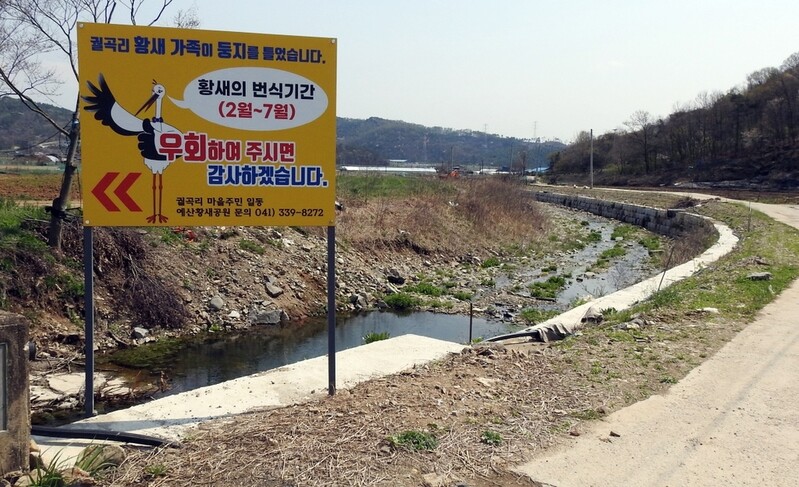 |
| ▲ This photo, provided by Yesan Stork Village, shows the warning sign for the villagers to be careful during the breeding period. (PHOTO NOT FOR SALE) (Yonhap) |
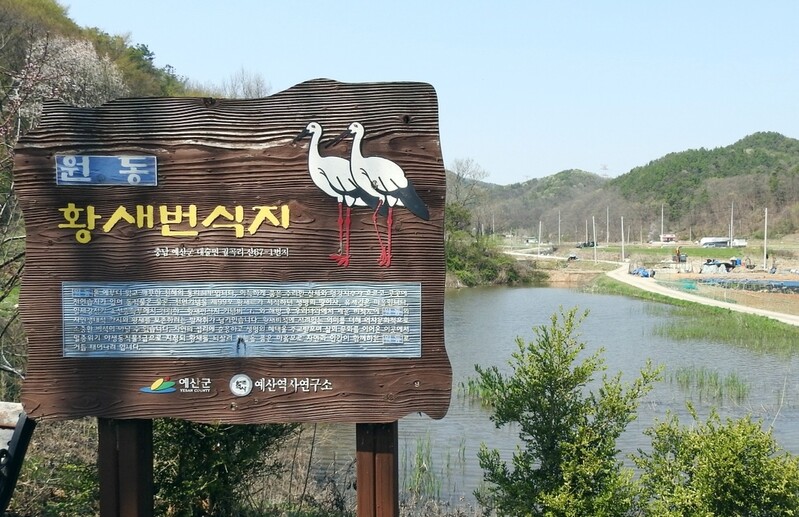 |
| ▲ This photo, provided by Yesan Stork Village, shows the sign that tells that it is a Stork breeding site. (PHOTO NOT FOR SALE) (Yonhap) |
SEOUL, April 21 (Yonhap) -- In the village where the storks grew 80 years ago, a new family of Stork has set up a nest and succeeded in hatching eggs.
Yesan county, South Chungcheong province announced on the 20th that a second-generation stork made a nest in Golwokri, Daesul-myeon and hatched two eggs.
As much as Gwolgokri was a popular site for stork breeding until the 1940s, there is also a monument for the "Natural Monument Stork breeding site."
The couple which recently bred two eggs are both wild storks born from first-generation storks without any artificial breeding. The male stork "Haengun," stayed in Russia and China for two years before coming back to South Korea.
The female stork, "Hyeonhwang," on the other hand, traveled all over South Korea and North Korea, and came back to her hometown where she met Haengun.
Beginning from the end of January, the two storks started nesting in an artificial nest tower 130m away from the monument, and with the research team and the breeding team helping with the feeding habitat, they laid four eggs at the end of January.
As the couple carefully incubated the eggs, at the end of last month, two eggs were hatched.
Around the artificial nest tower, there is a wetland 7,580m2 big. The nearby Hwasancheon, Dalcheon, and Daegokcheon streams are also rich in crucian carps, loaches, and frogs, making them suitable for storks to hunt for food.
The special love of the residents of Gwolgok-ri also played a big role on the breeding of storks.
Residents paid special attention, even using a detour instead of the village road in front of the nest tower during the breeding period of the storks.
"I'm very proud that storks has made a nest in our village again," an official from the village, Shin Yang-sun said. "It is very meaningful that storks and people are able to live in harmony here in our town. I also think that many good things will happen in Daesul-myeon as much it's an auspicious bird."
Yesan-gun began releasing storks in 2015 with the support of the Cultural Heritage Administration.
This year, 10 pairs of wild storks are breeding centering Yesan-gun with 3 pairs in Taean and 1 pair in Asan. So far, 43 eggs has been laid and 30 have hatched.
"The two young storks were able to hatch through the efforts of the villagers and Yesan-gun. The young storks are growing healthy with their parents' care," Kim Soo-kyung, a researcher at Yesan Oriental Stork park said. "Storks usually grow in their nest for about 65 days, so I expect the young storks to fly by the beginning of June."
(This article is translated from Korean to English by Haemin Kim.)
(END)
(C) Yonhap News Agency. All Rights Reserved



















![[풀영상] 디즈니+ '메이드 인 코리아' 제작발표회|현빈 Hyunbin·정우성 Jung Woosung·우도환·서은수·원지안·정성일·강길우·노재원·박용우|Made In Korea](/news/data/20251215/p179554206856695_165_h.jpg)





